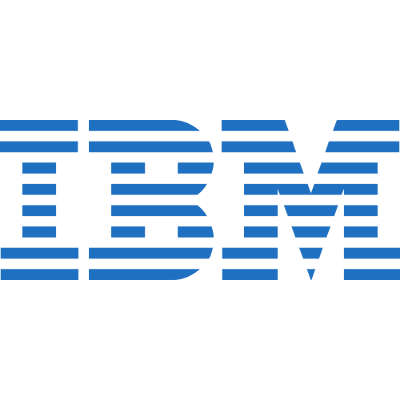How Easily Could A Freak Event Take Down Your Business?

Your business is much more vulnerable to dangerous entities than you’d care to admit. Think about it–all it takes is one unexpected event to cause untold amounts of chaos for your business. To make matters worse, these events are often outside of your control. Data loss incidents might be unpredictable, but they can be soothed thanks to a little bit of preventative management.
It’s one thing protecting yourself from cyber security threats (which you definitely need to be concerned with) but there are other types of unplanned disasters that can show up without warning. We’re talking about acts of nature and misfortune, which are certainly much more difficult to prevent than a hacking attack–there’s little you can do to stop the weather.
The only way to guarantee your business’s future is to think of your organization like you would an egg. An egg could crack at any time unless you take preventative measures to keep it safe. For example, you’d keep it in the carton in the refrigerator, safe from any external elements. This is the way that you want to preserve your business’s data–in a safe, controlled environment that is free of external troubles.
This type of data isolation is generally not possible with traditional tape backup solutions. Your organization would take one backup a day after your office has closed, and this backup would be stored on a tape, which is either stored off-site or in-house. This presents potential problems for your organization in the fact that the tapes could be lost, misplaced, stolen, or destroyed while being stored in-house. Furthermore, since they are only being taken once a day, you run the risk of a data loss incident derailing operations during the middle of the workday. You could potentially lose up to an entire day’s worth of progress that could make all the difference when finishing a crucial project and meeting a deadline.
Plus, nobody wants to think about the downtime that comes from restoring data to your infrastructure. With traditional tape backup, restoring data could take anywhere from several hours to days, depending on the amount of data that’s being restored. Furthermore, your operations will be halted during this process. When no work is being done, you’ll only get further and further behind.
Cloud-based backup allows for much more dynamic data preservation techniques that utilize the virtual environment of the cloud. You can take multiple backups as often as every fifteen minutes, allowing for minimal data loss. Furthermore, your data can be restored directly to the BDR device itself, allowing for near-instantaneous recovery and minimal downtime. It’s just one way that planning for the worst can help you avoid it.
Does your organization need comprehensive data backup and disaster recovery? We can equip your business with BDR so that you’ll never have to be concerned with data loss again. To learn more, reach out to us at (317) 705-0333.
Is VoIP A Part Of Your Business Yet? It Should Be

What is your business’s preferred method of communication? It’s usually email or some type of telephone solution. Especially for a telephony solution, you need to make sure that your communication infrastructure is designed specifically for your organization. To this end, a traditional telephone system could be holding your business back from achieving its most lofty goals.
Take a moment to think back to when you first implemented your in-house telephone system. You undoubtedly had to run a ton of wires to every single desk in your office just to have a phone at every workstation. There is also the contract that you had to sign with your local telephone company. Perhaps you signed up for a plan that included services you didn’t want or need, which is causing strain on your budget and prevents you from pursuing greater opportunities. And you can forget about adding new users to your phone system, as it would likely be a bigger pain than it’s worth. How can you take full advantage of a telephone solution, when the telephone companies that provide such a solution are so out of touch with the needs of a modern business?
The ideal approach to telecommunication in the business world is one that doesn’t place so many restrictions on its users and promotes flexibility. VoIP, or Voice over Internet Protocol, can use your business’s Internet connection to send and receive voices. Due to this, you stand to benefit considerably from the implementation of a hosted or in-house VoIP solution.
VoIP Cuts Costs
There are so many costs associated with implementing a traditional telephone system in your office. Considering how VoIP uses your Internet connection–something that you already pay for–you can save a bit on operational costs and eliminate waste. Your only concern is that your network’s bandwidth isn’t substantial enough to handle this extra burden, so you’ll want to work with an IT provider to ensure that this new benefit doesn’t become a liability.
VoIP Simplifies Your Infrastructure
Running cables and wires all around your office takes a huge amount of time, especially if it’s to be done right. This time eventually transforms into labor hours and costs. Since VoIP doesn’t require any additional wires installed in your office, and all you need is an Internet connection, adding new users is simple as can be. All you need to use a VoIP solution is the device itself, like a desktop or a smartphone, the VoIP application, and an Internet connection.
VoIP Offers Extra Features
VoIP allows your organization to take advantage of much more than just telecommunication. Depending on your business’s needs, VoIP also offers services such as video chat, instant messaging, and more. Adding these solutions to your VoIP client is possible, but if you would prefer separate applications, we also offer a Unified Communications and Collaboration system.
Regardless of your business’s needs, VoIP can offer your organization something that can benefit its operations. To learn more about VoIP, reach out to us at (317) 705-0333.
Managed IT Protects Your Business And Your Budget

When it comes to maintaining and managing technology properly, larger businesses traditionally have the advantage over small-and-medium-sized ones, as they have greater financial resources. In fact, many small businesses will postpone these activities to help preserve the flexibility in their budget. What these businesses need is a way to leverage the benefits of proactive IT maintenance without breaking the bank.
Small businesses face considerable difficulties when trying to maintain their IT. First of all, since they generally have fewer employees, the workload is heavier for each resource. This leads to IT management being postponed in favor of other, seemingly more important concerns. However, this strategy accomplishes little more than putting the company in a more precarious position. Exacerbating the problem is the fact that hiring the personnel that could help you better manage your IT is often prohibitively expensive.
If neither option is practical, business in this position should turn to option three: managed IT services.
Managed services are a much different approach than what many would perceive as the typical IT service process, referred to as break/fix. Let’s say one of your pieces of hardware isn’t operating correctly. Once you report the issue to your IT provider, they dispatch someone to your location to resolve the problem, and you’re left on the hook paying a bill for that one specific call. You lose the capital, but also the potential revenue from the downtime you have experienced. This reactive approach therefore is quite a bit costlier than the increasingly more popular managed service model, which takes a proactive stance against technology issues.
At Catalyst Technology Group, we follow this proactive approach, monitoring your solutions remotely so that we can prevent issues from influencing your business, especially before they turn into bigger problems. For instance, under our managed service agreement, we will keep an eye on your infrastructure for any warning of hardware failure so you have an opportunity to replace that hardware before it can have a negative impact on your business.
If this option sounds more expensive than the break/fix approach, consider this: if you combine the loss in revenue that downtime from the broken equipment lead to and the cost of replacing or repairing the broken technology, you are out a significant amount of usable capital.
Compare that to managed services where there’s a chance that your problem could be resolved remotely–leading to a smaller service fee when compared to the cost of hardware replacement–it makes a lot of sense to see what kind of value Catalyst Technology Group’s certified technicians can bring you.
Depending on what is included in your service level agreement, the expenses associated with managed services will essentially always be less than the costs that of break/fix. Catalyst Technology Group can help you to make these changes in your own company, making operations both more reliable and less expensive in the process. To learn more about what managed IT services can do for you, give us a call at (317) 705-0333.
When Juggling Business Responsibilities, You Can’t Afford to Drop IT Maintenance

The business world increasingly relies on IT services. Regardless of which industry you fall into, IT will undoubtedly play a major role in how your business functions on a daily basis. Businesses also need their technology to remain in proper working order, but this is easier said than done–especially if you don’t have the luxury of an in-house IT department. Thankfully, managed service providers make this much less difficult.
Compared to the traditional break-fix model of IT management, a managed IT provider aims to take a different, more proactive approach. Instead of managing your technology yourself and paying for maintenance when a system has failed, a MSP will take measures to keep your IT in proper working order so that it doesn’t leave you high and dry. Another imperative detail to include is that a managed IT provider takes care of your IT solutions so that you don’t have to, keeping you from spending time on business-disrupting IT troubles and preventing downtime as a whole.
For an example, consider the following scenario and how MSPs can influence how you do business.
It goes without saying that managing a business might have you spread a bit thin. Some tasks will naturally be sidelined in favor of more important initiatives. For example, installing updates for your various technology solutions is a task that might be pushed to the side, even though they are needed, simply because it’s a time-consuming process. Therefore, you miss out on critical opportunities and benefits that you could gain from updating your technology regularly.
Perhaps you are running a version of your operating system or program that is vulnerable to a serious threat. Without a proper update or patch, this vulnerability could lead to your business suffering from downtime or data breaches. It might not seem like there’s time in the day to patch up this vulnerability, but your organization can suffer from a delayed reaction to this vulnerability. Yet, juggling all of your responsibilities makes a timely approach to this issue, which has yet to show any real signs of even being an issue, just about impossible.
Managed services allow your organization to receive technology assistance from an MSP, including real-time monitoring and management, as well as updates as they are needed. This means that your applications will always remain up-to-date without your organization taking time out of its already-full schedule to make sure they happen. Since most maintenance can be performed remotely during the company’s off-hours, you can avoid in-house distractions and downtime.
Of course, this is only a singular example of how managed IT services can help your organization. If you want to know more about managed IT, reach out to Catalyst Technology Group at (317) 705-0333.
100+ Years Ago, IBM Started Just Like Any Other Business

Of the many technology companies in the public eye, IBM is one of the oldest and perhaps the most recognizable–but do you know the story behind Big Blue? It’s a history of innovation and revolution in computing that stretches back over 100 years, to when it was created by uniting three existing companies.
In 1911, a man named Charles Runlet Flint merged two of his existing companies, International Time Recording Company and Computing Scale Company of America with a critical third company that he had just acquired: Tabulating Machine Company. This new company was known as the Computing-Tabulating-Recording Company (or CTR).
The machines made by CTR were capable of sorting, analyzing, and eventually running calculations based on punch cards that were input into the machine. While this development had clear business applications in hindsight, it wasn’t until the controversial Thomas Watson was brought in as company president (after deftly avoiding lasting consequences from a conviction of violating the Sherman Antitrust Act–the act that bans monopolies) that the value of the tabulating division was focused upon.
Not only did Watson know his target audience well enough to know that the business-oriented tabulating machines would be in high demand as the United States became increasingly business-oriented itself, but he also understood the value of presenting CTR’s offerings as a service, rather than a product. This arrangement proved to be mutually successful for both CTR and its clients, as the sales team was able to inform the company of what their clients wanted to see from them next, thereby allowing the needs of their clients to be met.
By 1924, CTR had been renamed to International Business Machines to reflect the consolidation of the business and echo the timeless feel of other large brands of the day. 1925 saw Watson take up responsibilities as both the chief executive officer and the chief operating officer. In the following years, IBM would thrive in the face of the Great Depression, only receiving a boost from the federal bureaucracies’ need for computing devices after President Roosevelt’s New Deal mandates. Demand for the tabulation machines continued to increase during wartime, and by the time Thomas Watson, Jr. was brought on as his father’s successor in 1952, computers were slowly becoming more and more common in the office environment. Many companies had a simple transition, as they were simply trading their IBM tabulators for computers.
IBM truly went global in 1949, offering sales worldwide in a total of 58 countries. IBM World Trade Corporation dominated the global market everywhere but Japan and the United Kingdom, achieving a market share of (only) 33 percent in those countries.
However, in 1952, IBM was again hit by an antitrust lawsuit from the US government, and more critically, another from a niche computer pioneer called Control Data Corporation. IBM powered through these challenges, as well as shifts in leadership until the 1980s. At this point, Big Blue began to falter under pressure from other niche competitors. As a result, the company changed their management strategy, and weathered through business fluctuations until 2004, when they again stabilized their success rate.
IBM’s story of one of success, and there are lessons to be learned here for your own business. By forming the right partnerships and providing a product or service that’s in growing demand, your company can grow exponentially. IBM also shows business owners how to overcome challenges, like diversifying what you do in order to weather the inevitable changes in the marketplace, as well the importance of strong leadership. By learning from the successes of companies like IBM, who knows, maybe your SMB can do what it takes to rise to the top!
Because Busy Business Owners Shouldn’t Have to Worry About Technology

A business without its own IT department will expend vast amounts of time and resources to manage its technology. Tasks like managing your email solution, upgrading or managing your desktop infrastructure, or securing your network from threats, can be draining. If you don’t have time to perform these tasks, then it’s worth it to invest in an outsourced IT provider for your technology needs.
Many organizations are faced with an increasing need for technology maintenance like never before, and they are turning their attention toward third party technology management brought to them by managed service providers. At first, this proposition might sound a bit strange. It’s difficult to justify purchasing services when you can just do them yourself. However, you’ll find that the long-term cost savings will far outweigh any costs associated with managed IT, and you’ll save both time and resources that can instead go to better purposes.
In other words, rather than spend time managing your organization’s technology, you’ll be able to focus more on running your business.
Granted, there is the option of hiring an internal IT department. Although, after looking closely at this expense you may find that this move could eventually become much more of a long-term cost than investing in an outsourced managed service provider. Paying multiple salaries could easily become much more of a problem for your budget than a simple monthly payment to a managed service provider. It’s a simple choice, but you need to consider your business’s unique needs before making it.
Some organizations believe that managed IT means giving up control over your IT infrastructure, but this is simply false. A good managed IT provider like Catalyst Technology Group will make every effort to create a transparent, trusting relationship with your organization. We believe that cooperation is the key to unlocking your business’s full potential, and a proper technology strategy is the best place to start. A proactive technology policy will be able to help you keep your operational infrastructure in proper working order.
As a managed service provider, Catalyst Technology Group offers the following services for your business:
- Network security management
- Email management
- Hardware and software procurement
- Remote maintenance and management
- Backup and disaster recovery
- Help desk support
- And more!
Does your business want to leverage technology to the best of its ability? If so, reach out to us at (317) 705-0333.
Statistics Show How Mobile Devices Can Threaten Your Business

While mobile devices like smartphones and laptops have allowed modern employees to keep up with their workload and improve flexibility, they are also a significant threat to your organization’s data. Therefore, you need to consider how these mobile devices will affect your business’s IT strategy. Even if you haven’t, it’s likely that someone in your organization has considered it
Gartner conducted a large survey last year that came to the following conclusions:
- 8 out of 10 employees use personal devices with them to the office.
- 37 percent of employees are given laptops by the employer.
- 23 percent of employees surveyed are given company-provided smartphones, but only 10 percent of them don’t use their own personal device.
- Only 20 percent of employees given a work device were unsatisfied with it. The satisfaction rate is usually higher among those who are given smartphones, compared to those who are given desktops or laptops.
- Over half of all employees who use their smartphones for work use their own personal device.
- Two-thirds of employees use a personal device for work, including a smartphone, tablet, or laptop.
While your business may have gone the extra mile to protect its data, as well as access to internal files and email, personal devices add a new level of complexity to your strategy.
What Are Some of the Risks?
If you let mobile devices onto your company network haphazardly, there will be plenty of risks associated with them. This is why mobile devices are such a controversy in the first place, and why employers go to such lengths to control their use in the workplace.
Lost devices could potentially give strangers, or even thieves, access to your company’s email, which can include anything from sensitive client information to sensitive information like passwords or usernames. Furthermore, if a personal laptop gets hacked or infected by malware (or worse), the infection could spread to your network. Even something as simple as a public Wi-Fi connection could put your business’s data or passwords at risk.
Now, consider what happens when an employee leaves your organization. If they are using a personal device for work-related tasks, they could have contact lists, files, or other information that you don’t want them to have anymore–especially if they leave on bad terms. The resulting fallout could have you in damage control mode for far too long to make mobile devices worth it.
Let Us Help with BYOD
With a Bring Your Own Device policy, your organization will be prepared to properly leverage employee-owned personal devices. If you want to use devices without placing your data at risk, a well-rounded plan that covers all your concerns is the best way to do this. To learn more about BYOD and how you can keep your sensitive data safe, even on mobile devices owned by your employees, reach out to Catalyst Technology Group at (317) 705-0333.
3 Significant Ways Your Business Can Take Advantage of Virtualization

With cloud computing on the rise, more businesses than ever before are taking advantage of great new tools that allow them to get the leg up on the competition. With virtual technology services at their disposal, they are completely changing the way that they approach computing, and the best part is that these services are affordable even for smaller organizations with limited budgets. Here are three of the best ways your organization can implement virtualization solutions.
Software as a Service (SaaS)
Cloud-hosted software is part of a trend that is increasing the accessibility of applications designed to improve the way you do business. Thanks to this type of software, SMBs are able to grow more dynamically and achieve more flexibility in the way that they function. Examples of Software as a Service include well-known solutions such as Microsoft Office 365 and Google’s G-Suite, but just about any software that is offered through the cloud on a subscription basis can be deemed Software as a Service. The main attraction of SaaS is that businesses make smaller monthly payments to use the same software that would otherwise require a full-fledged license purchase. If you’ve ever had to purchase multiple licenses for multiple users, you know how this can be a great way to save money for any small business.
Voice over Internet Protocol (VoIP)
Virtual telephone solutions like VoIP are actively replacing the traditional telephony infrastructure in the office environment. This is mainly due to the fact that they decrease costs overall and provide a level of flexibility that’s never been seen before, both in and out of the workplace. Since you use the Internet to make and receive calls, you’re using something that you already pay for to eliminate an unnecessary expense. Plus, you can use VoIP apps on a traditional handset, a desktop or laptop, and even your smartphone, allowing you to take your office phone number on the go.
Hardware Virtualization
If you have been managing an entire in-house IT infrastructure on your own, you know how challenging it can be to manage servers and other networking components. Due to this immense responsibility, many organizations are choosing to outsource the care of their networking components through a hardware virtualization vendor. This allows companies to consolidate their servers to make better use of their resources, as well as save on energy costs, like air conditioning and electricity. Plus, you’ll be able to access any of these resources through the cloud, and you’ll be able to simplify your in-house network considerably.
If your business is ready to take the next step toward technological advancement, reach out to Catalyst Technology Group at (317) 705-0333. Our trusted technicians are happy to discuss what we can do for your business.

